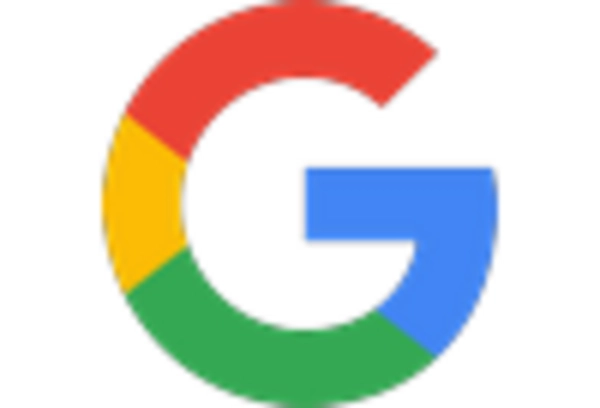The iot analytics market is currently characterized by a dynamic competitive landscape, driven by rapid technological advancements and increasing demand for data-driven decision-making across various sectors. Major players such as IBM (US), Microsoft (US), and Oracle (US) are strategically positioned to leverage their extensive technological capabilities and market presence. IBM (US) focuses on innovation through its Watson IoT platform, which integrates AI and machine learning to enhance analytics capabilities. Microsoft (US) emphasizes partnerships and cloud-based solutions, particularly through Azure IoT, to facilitate seamless data integration and analytics. Oracle (US) is concentrating on expanding its cloud offerings, aiming to provide comprehensive analytics solutions that cater to diverse industry needs. Collectively, these strategies foster a competitive environment that prioritizes technological innovation and customer-centric solutions.
Key business tactics within the iot analytics market include localizing manufacturing and optimizing supply chains to enhance operational efficiency. The market structure appears moderately fragmented, with a mix of established players and emerging startups. The influence of key players is substantial, as they not only set industry standards but also drive innovation through strategic collaborations and acquisitions. This competitive structure encourages continuous improvement and adaptation among market participants, ensuring that they remain relevant in an evolving landscape.
In October 2025, IBM (US) announced a significant partnership with a leading automotive manufacturer to develop advanced predictive maintenance solutions using its Watson IoT platform. This collaboration is poised to enhance operational efficiency and reduce downtime, showcasing IBM's commitment to leveraging IoT analytics for real-world applications. The strategic importance of this partnership lies in its potential to set new benchmarks in the automotive sector, emphasizing the role of IoT in driving innovation and operational excellence.
In September 2025, Microsoft (US) launched a new suite of analytics tools within its Azure IoT platform, aimed at providing businesses with enhanced data visualization and predictive analytics capabilities. This move reflects Microsoft's ongoing strategy to strengthen its position in the cloud-based analytics space. By offering advanced tools that facilitate data-driven decision-making, Microsoft is likely to attract a broader customer base, thereby reinforcing its competitive edge in the market.
In August 2025, Oracle (US) expanded its cloud infrastructure to include enhanced IoT analytics capabilities, enabling businesses to process and analyze large volumes of data in real-time. This expansion is strategically significant as it aligns with the growing demand for real-time analytics solutions across various industries. By enhancing its cloud offerings, Oracle positions itself as a key player in the market, catering to the increasing need for agile and responsive analytics solutions.
As of November 2025, current competitive trends in the iot analytics market are heavily influenced by digitalization, sustainability, and the integration of AI technologies. Strategic alliances among key players are shaping the landscape, fostering innovation and collaborative solutions. The shift from price-based competition to a focus on technological differentiation and supply chain reliability is evident. Moving forward, competitive differentiation is likely to evolve, with an emphasis on innovative solutions that address complex business challenges, thereby enhancing overall market resilience.

















Leave a Comment